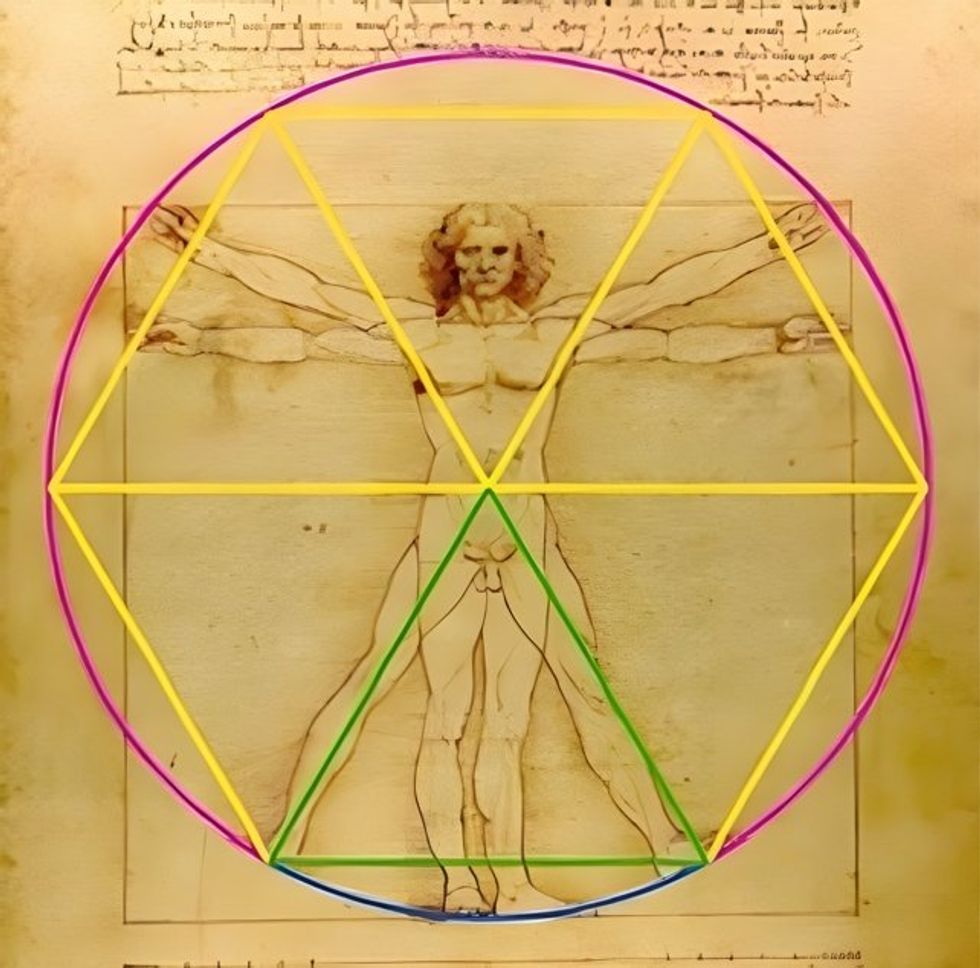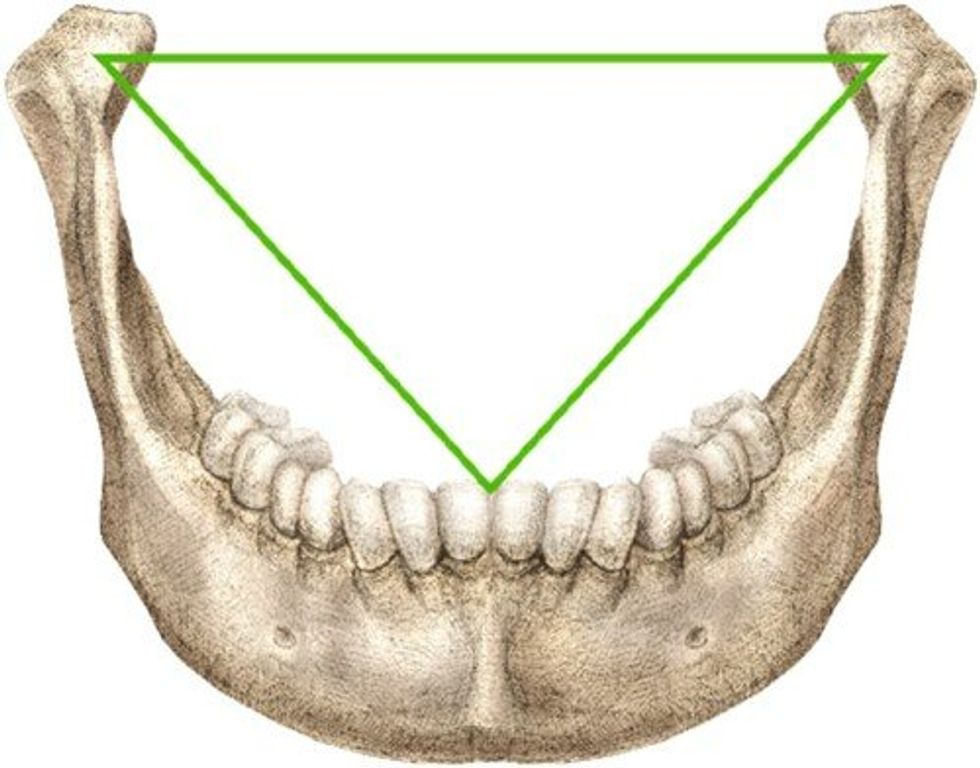Science & Tech
Sinead Butler
Jul 22, 2025
Leonardo da Vinci #Facts #shorts
Unbelievable Facts - Vertical / VideoElephant
Leonardo da Vinci is the painter and polymath behind the iconic Mona Lisa, but did you know just how much geometry influenced his artwork?
You've probably also heard or seen his other notable drawing of the Vitruvian Man, created around 1490, and the illustration represents da Vinci's ideal human proportions with geometry as described by the ancient Roman architect Vitruvius.
But for over 500 years, one thing that left the art world puzzled was the certain proportions da Vinci drew for the arms and legs in the image.
However, a dentist from London reckons he's solved the long-held mystery with the study published in the Journal of Mathematics and the Arts.
According to Rory Mac Sweeney, the answer can be found in the Vitruvian Man's crotch: an equilateral triangle that he thinks may explain "one of the most analyzed yet cryptic works in art history."
As mentioned earlier, the drawing is inspired by Vitruvius, and he believed the perfect human body should fit inside a circle and a square.

A square is used by da Vinci that fits the man's 'cruciform pose' with his arms outstretched and legs, while the inside of the circle is where the arms and legs are spread.
In the past, the drawing's proportions were thought to be based on the Golden Ratio Theory, but this popular assumption wasn't the case, as the measurements don't make sense.
The answer has been right in front of us, Mac Sweeney says, describing how it has been "hiding in plain sight," as per Science Alert.
"If you open your legs… and raise your hands enough that your extended fingers touch the line of the top of your head… the space between the legs will be an equilateral triangle," da Vinci wrote in his notes for the Vitruvian Man.
Mac Sweeney followed this, but after doing the maths on the triangle, he discovered there was a ratio of around 1.64 to 1.65 caused by the spread of the man's feet and the height of his navel.
This is close to the tetrahedral ratio (1.633), used to find the best way for sphere packing, which was not officially established until 1917.
The height-to-base ratio of a pyramid shape could be 1.633 if four spheres are connected as closely as possible - a principle similar to the triangular principle used in dentistry, as possibly noted by Mac Sweeney.
In this context, when looking at a human jaw, the ratio of Bonwill's triangle, used since 1864 and is the best positioning for jaw function, is also 1.633.

According to Mac Sweeney, this isn't by chance, as he believes our jaws maximise mechanical efficiency by naturally matching up to tetrahedral geometries.
Could the tetrahedral ratio be repeated not just in our jaws?
Mac Sweeney reckons this is the case since "human anatomy has evolved according to geometric principles that govern optimal spatial organization throughout the universe."
"The same geometric relationships that appear in optimal crystal structures, biological architectures, and Fuller's coordinate systems seem to be encoded in human proportions," he continued, "suggesting that Leonardo intuited fundamental truths about the mathematical nature of reality itself."
Let's say Mac Sweeney is spot on with his findings (which remains to be seen among scientists); it means that while drawing the Vitruvian Man, da Vinci may have happened upon a universal principle.
Just goes to show that over 500 years on, we're still finding out more information about one of the world's most recognisable drawings.
Elsewhere, Scientists unearth a secret hidden within the Mona Lisa, and Art historian discovers secret behind one of Mona Lisa's big mysteries.
How to join the indy100's free WhatsApp channel
Sign up to our free indy100 weekly newsletter
Have your say in our news democracy. Click the upvote icon at the top of the page to help raise this article through the indy100 rankings.
Top 100
The Conversation (0)














